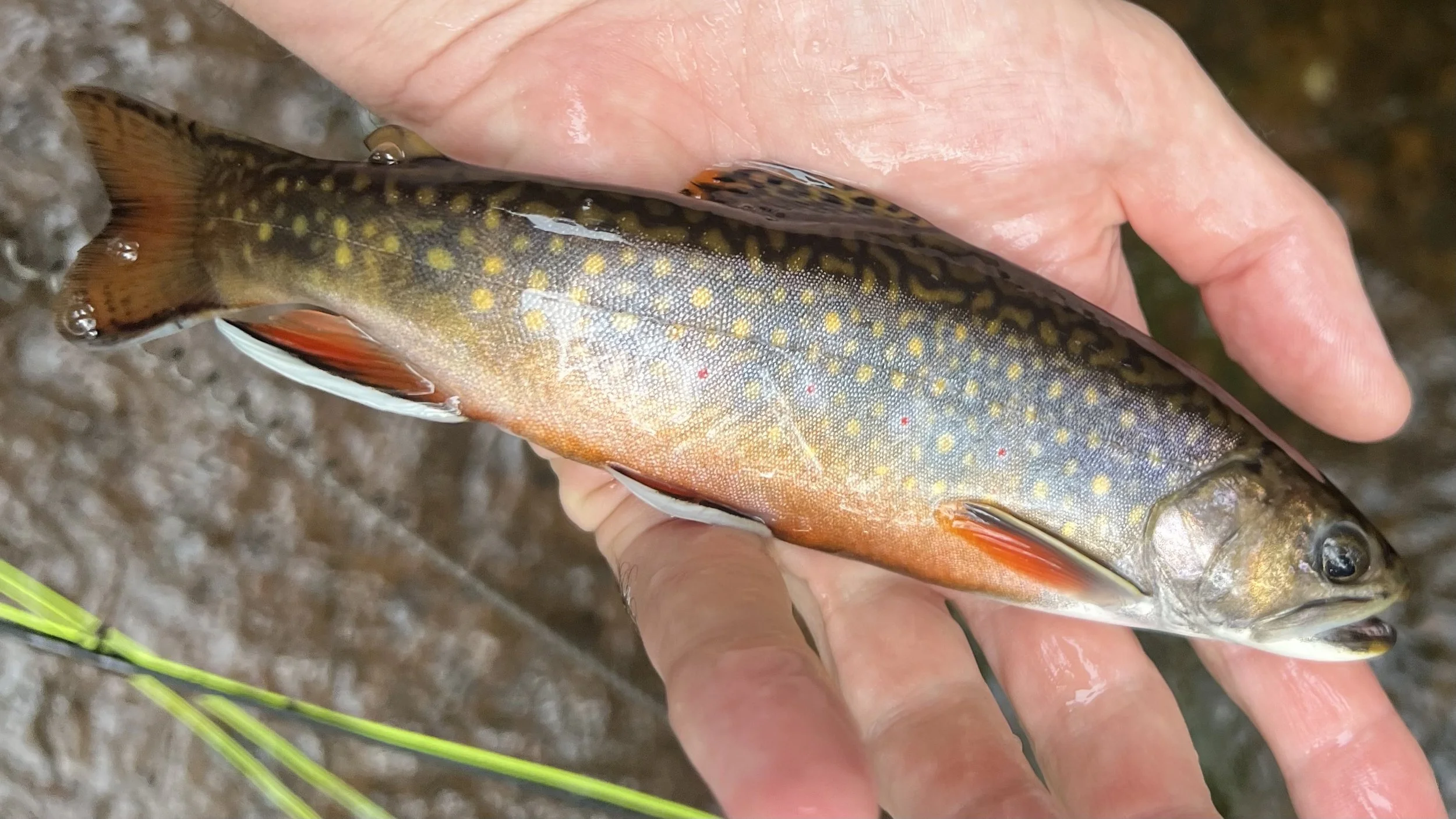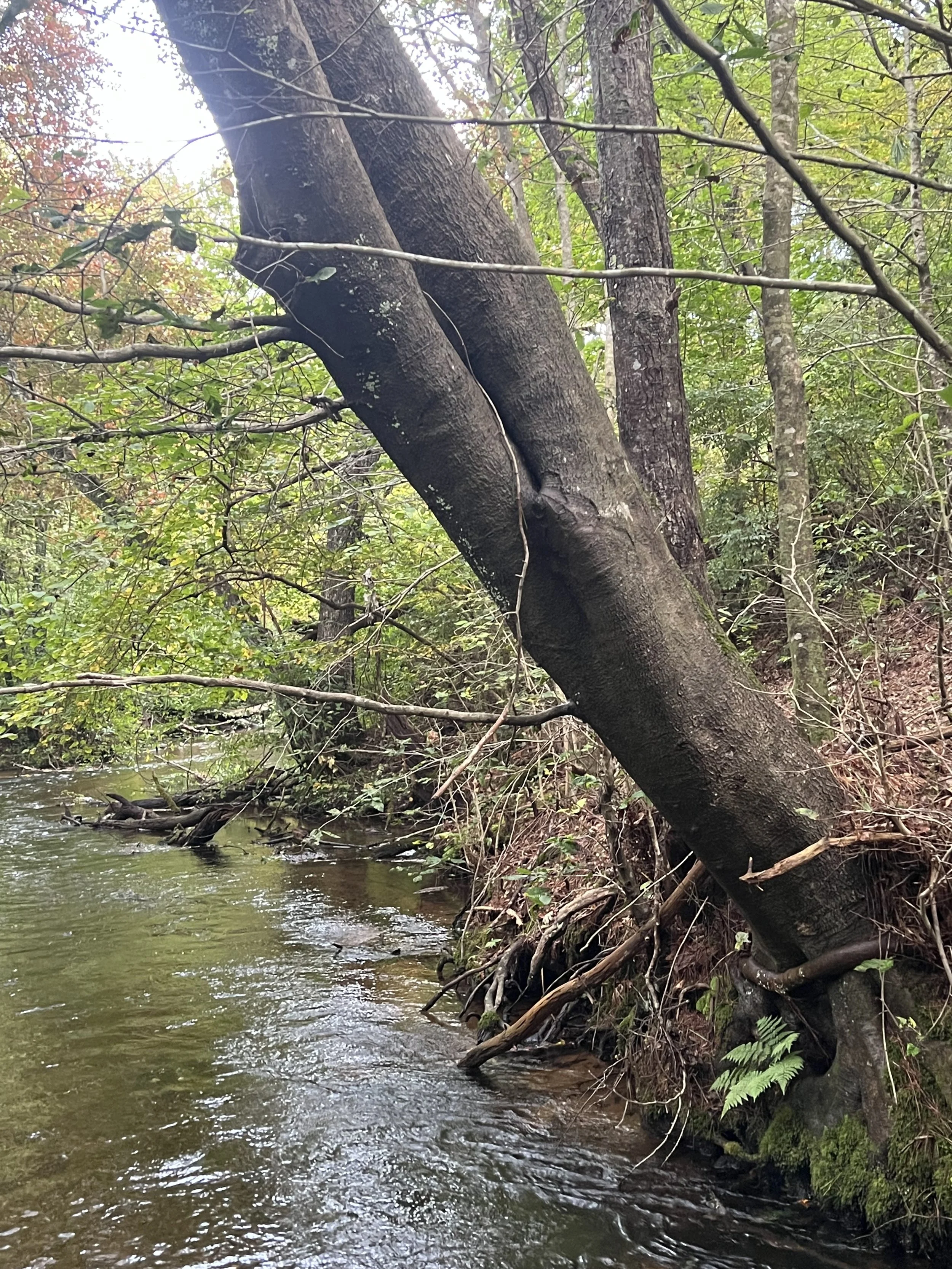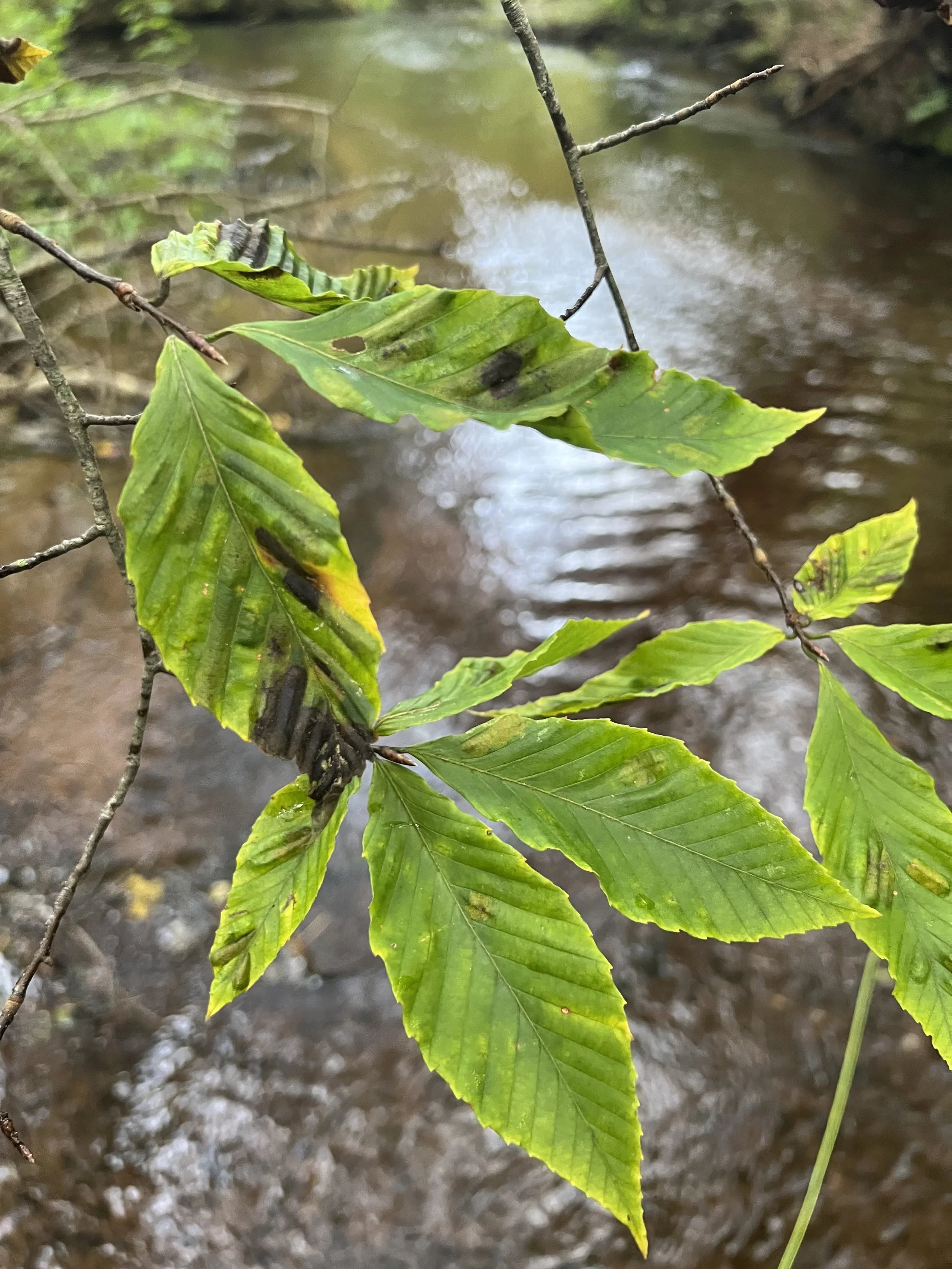Beech Trees and Brook Trout
A Mashpee River brook trout.
Ecology is an interesting thing - it brings into focus the fascinating connections within the natural world.
The Waiau River flows fast and clear through the Southland region of New Zealand - its waters home to both brown and rainbow trout. The upland forests of the Waiau valley are dense with beech trees. Interestingly, the fate of both Waiau trout and beech trees are intertwined. Once every 5 years the Waiau beech trees go to seed, leading to a dramatic increase in the rodent population. As the seed supply dwindles the following spring, millions of rodents begin to venture into rivers and streams as they search out new habitat and food sources. Upon entering the water, many an unlucky rodent will become a high-protein snack for a waiting trout. Waiau beech trees are good for trout.
An American beech tree overhanging the Mashpee River where its root system stabilizes the bank, provides cover for hiding trout, and its canopy provides critical shade for the stream below.
Here on Cape Cod, it turns out beech trees are also good for trout. American beech (Fagus grandifolia) is a slow-growing tree that thrives in the steep forested upland valleys lining the lower and middle Mashpee River. Their dense canopy provides shade, regulating the water temperature and preventing excessive aquatic vegetation growth that would clog the stream and limit flow. The beech trees are one of the reasons the Mashpee River is so hospitable to brook trout (Salvelinus fontinalis). Unfortunately, a rapidly spreading disease poses a serious threat to Cape Cod's beech trees. First detected in the United States in 2012, beech leaf disease reached the Cape in 2022, with widespread infestations observed in Mashpee and other areas. While the full extent of the damage remains unclear, mortality is a concerning possibility.
Leaves of an American beech showing signs of disease.
Beech leaf disease is caused by a non-native nematode. This microscopic roundworm infects leaf buds and may be responsible for causing the disease directly, or by carrying a harmful fungus or bacteria. The nematode appears to be spread by wind, rain, or birds, but the exact mechanism of the disease's transmission is poorly understood. The nematodes feed on the buds and leaves of beech trees, disrupting their life cycle. By attacking the buds, the leaves are damanged before they fully develop, rendering them useless to the tree. The beech tree must then shed these unproductive leaves, wasting valuable energy. This weakened state makes the tree more susceptible to secondary pests and diseases, ultimately increasing the risk of mortality.
The long-term impact of beech leaf disease on Cape Cod remains uncertain. As the disease is relatively new to the region, it's difficult to predict the exact number of trees that will be affected, or the severity of the damage. While some trees may survive for several years, others could succumb to the disease within a shorter timeframe. Symptoms of beech leaf disease include dark bands between the veins of leaves, deformed and shriveled leaves that may be smaller than usual, a thick and leathery leaf texture, premature leaf drop, aborted buds resulting in sparse leaf cover, and a thinning canopy. And the thinning canopy is cause for concern for the brook trout.
The uncertain future of beech leaf disease casts a shadow on the Mashpee River's brook trout population. While other trees may eventually fill the gaps left by dying beeches, their ability to provide the same ecological benefits remains unclear. Brook trout, as sensitive indicators of river health, will likely feel the effects of these changes. As we monitor the decline of Cape Cod's beech trees, it's essential to keep a watchful eye on the interconnected web of native species that depend on them.
Aquatic vegetation growing thick in a section of Mashpee River that has lost its tree canopy.




